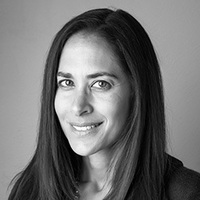Local Parkinson's Physician: Early Diagnosis, Exercise Key to Slowing Disease Progression
Old Westbury, NY (03/29/2023) — Every six minutes, a person in the United States will be diagnosed with Parkinson's disease, a neurodegenerative disorder that affects the nervous system and the parts of the body controlled by the nerves. In fact, approximately one million Americans are living with Parkinson's disease.
April is observed as Parkinson's Awareness Month, in honor of the birth month of James Parkinson, the London physician who first identified the disease in 1817.
However, more than 200 years later, many Parkinson's patients struggle to receive an early diagnosis, which is key in preventing disease progression.
"When the patient presents without a tremor, or if it is a younger patient, then the diagnosis can be easily missed," says neurologist and New York Institute of Technology Parkinson's Center Director Adena Leder, D.O. "Young-onset women with Parkinson's disease generally report that they are seen by approximately five doctors before a diagnosis is made. It is crucial to make the diagnosis early in order for the patient to start treatment."
Once diagnosed, Parkinson's symptoms can be managed with medication, but Leder emphasizes that exercise is actually the "most important part of treating Parkinson's."
"Medication does not slow the disease, it only helps to alleviate the symptoms. Exercise is the only modality to slow the progression of the disease," says Leder, who is a movement disorders specialist. "The earlier that patients are aware of their diagnosis, the sooner they can start to exercise."
The Adele Smithers Parkinson's Disease Treatment Center at New York Institute of Technology's Old Westbury, N.Y. campus offers a professional multidisciplinary team that includes a neurologist, physical and occupational therapists, and speech-language pathologists, who have years of experience and are passionate about helping people with Parkinson's disease to improve and maintain their quality of life. Learn more.
About New York Institute of Technology
New York Institute of Technology's six schools and colleges offer undergraduate, graduate, doctoral, and other professional degree programs in in-demand disciplines including computer science, data science, and cybersecurity; biology, health professions, and medicine; architecture and design; engineering; IT and digital technologies; management; and energy and sustainability. A nonprofit, independent, private, and nonsectarian institute of higher education founded in 1955, it welcomes nearly 8,000 students worldwide. The university has campuses in New York City and Long Island, New York; Jonesboro, Arkansas; and Vancouver, British Columbia, as well as programs around the world. More than 112,000 alumni are part of an engaged network of physicians, architects, scientists, engineers, business leaders, digital artists, and healthcare professionals. Together, the university's community of doers, makers, healers, and innovators empowers graduates to change the world, solve 21st-century challenges, and reinvent the future. For more information, visit nyit.edu.
